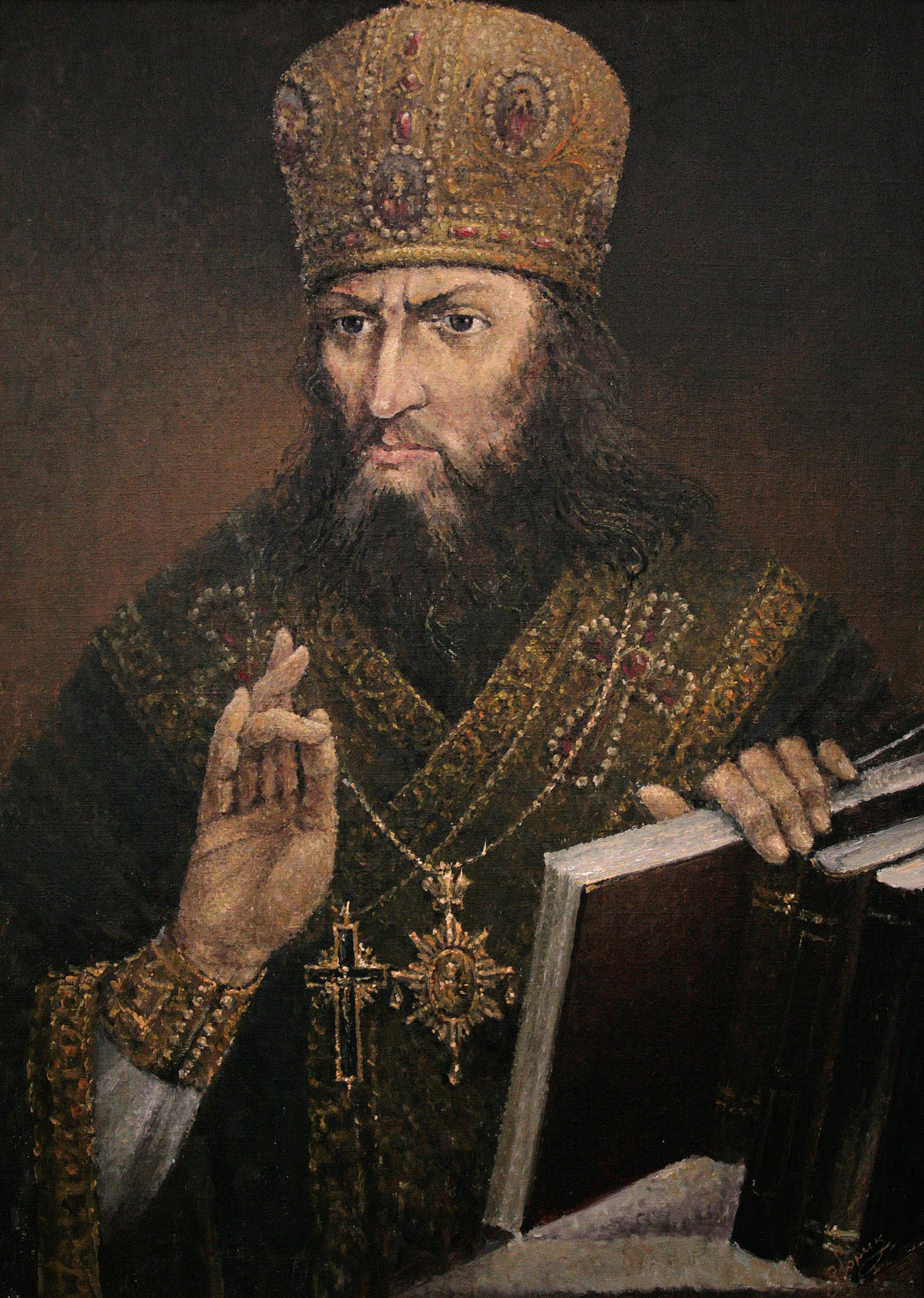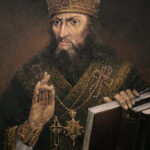Raphael Zaborovskyi
Raphael Zaborovskyi (the birth name Mykhailo) (1676, the city of Zboriv, the Lviv Land of the Ruthenian Voivodeship, now: the district center of Ternopil region – 10/22/1747, Kyiv) is an ecclesiastical and educational figure, Metropolitan of Kyiv, Halych, and Lesser Russia, an alumnus of the Kyiv-Mohyla Academy and its protector and philanthropist. He came from a noble family.
fter Jesuit College, he continued his studies at the Kyiv-Mohyla Academy, where he advanced to the philosophy class and attended lectures by professors Joasaph Krokowski and Stefan Jaworski.
In 1770, together with S. Jaworski, he moved to Moscow, where he taught rhetoric at the Moscow Slavic-Greek-Latin Academy. He was later appointed Chief Hieromonk of the Russian Navy, in 1723 he was appointed Archimandrite of the Tver Trinity Monastery of Kolyazin, and in 1725 he was ordained Bishop of Pskov, Izborsk, and Narva.
In Pskov, he established a Slavic-Latin school, where the graduates of the Kyiv-Mohyla Academy taught. In 1731 he was nominated the Archbishop of Kyiv, Halych, and Lesser Russia.
After returning to Kyiv, he helped to build temples, monasteries, and the Kyiv-Mohyla Academy. It was then that the buildings were restored and erected that are now included in the historical and cultural monuments of the UNESCO World Heritage List, in particular the bell tower of the Kyiv-Pechersk Lavra, the Metropolitan’s house in the monastery of St.Sophia, as well as the stone walls and the gate (now known as “Zaborovsky Gate”).
It was Zaborovsky who consecrated the site for the erection of the new St. Andrew’s Church. In 1743, the Metropolitan status was returned to the Kyiv department, and Raphael retrieved the rank of Metropolitan of Kyiv, Halych, and Lesser Russia. He is buried in St. Sophia Cathedral.
From the time of his return to Kyiv until his death, the Kyiv-Mohyla Academy was under the constant and diverse care of Raphael Zaborovsky. In 1731, with his support, the construction of the Old Academic (Mazepa’s) building began, for which the bishop invited the German architect J.-G. Shedel to Kyiv.
The educational building was expanded as a result of the second floor superstructure with the Congregational Hall, and the Annunciation Congregational Church was added to the building. The deeds of the Metropolitan, including those related to the architectural monuments and the educational building, are reflected in an engraving of 1739 made by a Mohyla student, engraver and painter Hryhoriy Levytskyi-Nos, and presented to Raphael Zaborovskyi by the Academic Corporation.
The further construction of the Kyiv-Mohyla Academy, the restoration and erection of its buildings were not only initiated by Raphael Zaborovskyi but also implemented at his expense. In addition, the Metropolitan patronized the poorest students, sent capable students to study abroad, petitioned the Academy for secular and ecclesiastical authority, and encouraged others to financially support professors and students. He also handed over, as Petro Mohyla had done before, books to the Mohyla library.
In 1734, Raphael drafted the earliest known Instruction for the Academy under the name “Leges academicae docentibus et studentibus observandae” (“Academic Rules for Professors and Students”). The document outlined the basic roles and principles of the Academy’s activities, defined the duties of students and professors and the rules for their behavior.
Under the patronage of Zaborovskyi over the educational institution, the teaching of the Greek and Hebrew languages was resumed here and the teaching of German was introduced.
Raphael Zaborovskyi was one of the most prominent benefactors of the Kyiv-Mohyla Academy, and his support and attention to streamlining and improving the teaching, learning, and living conditions of students echoed the activities of Petro Mohyla. The recognition of the merits of both Metropolitans and the appreciation of the academic community were reflected in the names of the institution: the Kyiv-Mohyla Academy and Kyiv-Mohyla-Zaboriv Academy.
Source: Kyiv-Mohyla Academy Reflected in Names: XVII-XVIII, 2001.

